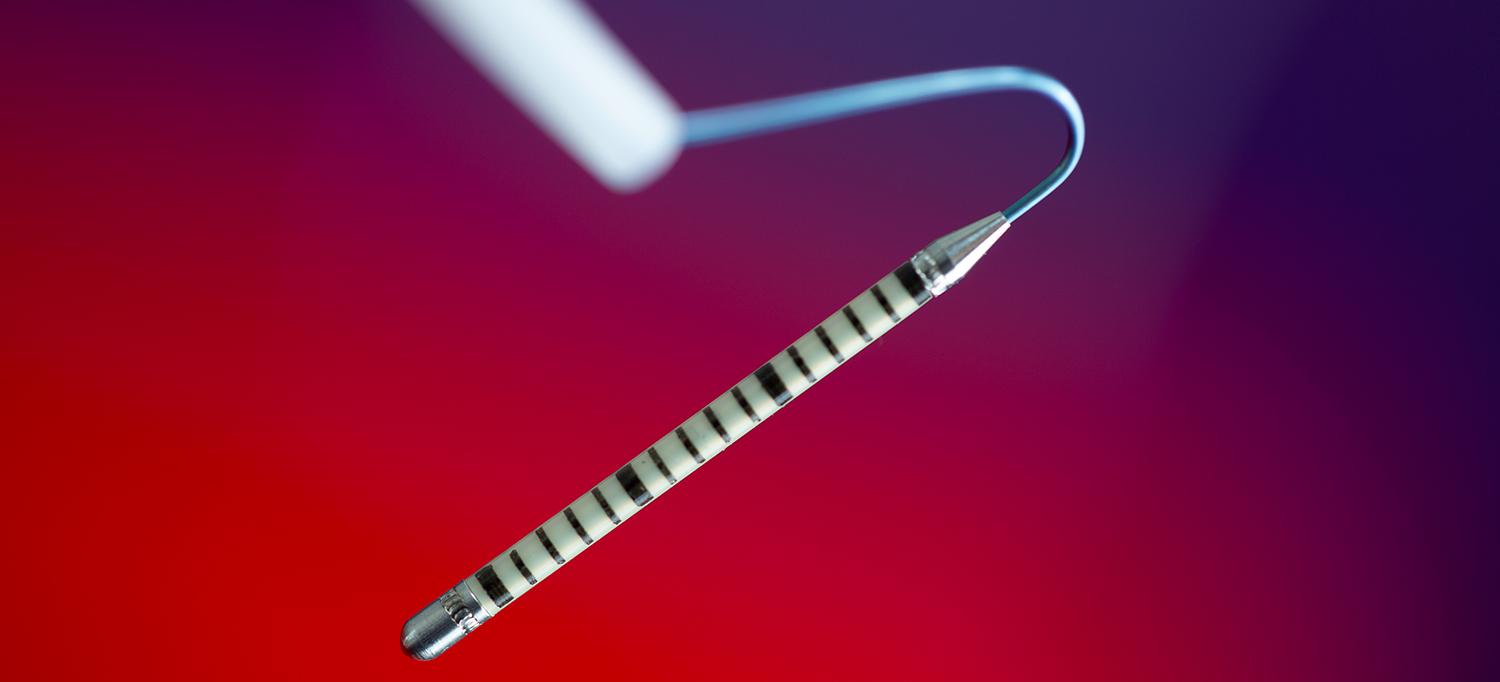Device Enables Gastroenterologists to More Accurately Follow Guidelines

Photo: NYU Langone Staff
A new endoscopic measuring device offers potential to help clinicians more accurately assess polyp size during colonoscopy and recommend the appropriate interval for follow-up surveillance, according to results from a pilot study led by Mark B. Pochapin, MD, director of the Division of Gastroenterology and Hepatology, the Sholtz/Leeds Professor of Gastroenterology at NYU Grossman School of Medicine, and vice chair for clinical affairs in the Department of Medicine at NYU Langone Health.
The Micro-Tech endoscopic gauge—dubbed the “Napoleon”—is capable of measuring polyps in 1-mm increments. Composed of a catheter with a 15-mm ruler, the flexible and rotatable device is inserted through the endoscope during colonoscopy, and then placed behind, in front, or adjacent to the polyp, where physicians can easily take a photograph for documentation.
Assessment of Polyp Size
It is currently standard practice for endoscopists to “estimate” rather than measure polyp size using endoscopic visualization, which often leads to misclassifying polyps, says Dr. Pochapin, who presented findings from the study during the American College of Gastroenterology’s 2020 Annual Meeting in October. In the pilot study, for example, four out of six physicians overestimated polyp size, leading them to place polyps in a larger size category than warranted based on actual measurements.
Postprocedural histologic exams of polyps may also lead to inaccurate assessment of polyp size, notes Dr. Pochapin, because the tissue can shrink when devascularized or placed in formalin. The Napoleon device enables precise measurements, allowing physicians to document accurately the original polyp size. This, in turn, has significant clinical implications in that the polyp size is a key factor in determining and recommending the appropriate time interval for follow-up post-polypectomy surveillance.
“Polyp size and number are key factors in our recommended colonoscopy surveillance guidelines,” says Dr. Pochapin. “Miscalculating polyp size can lead physicians to misclassify patients’ risk and therefore recommend longer or shorter intervals than necessary between colonoscopies.”
Implications for Surveillance Decisions
For the pilot study, Dr. Pochapin and colleagues evaluated 23 patients, age 50 to 85 years, who were having routine colonoscopy screening.
Physicians evaluated all polyps, first “estimating” their size visually and then measuring them using the device. Polyps were placed into 1 of 3 categories: diminutive (1 to 5 mm), small (6 to 9 mm), or large (≥10 mm). Of a total of 36 polyps, 3 were downgraded to a smaller size category after measurement with the Napoleon—1 dropped from small to diminutive, and 2 dropped from large to small.
“Downgrading the two polyps from large to small changed the recommended Multi-Society Task Force surveillance interval from 3 years to 7 to 10 years,” Dr. Pochapin says. “Although small, our study demonstrates that a precise measurement tool can dramatically alter clinical management following colonoscopy.”
Accurate measurements afforded by a small endoscopic ruler can also be a valuable tool to help trainees better understand polyp size early in their endoscopic careers. Utilizing the Napoleon when learning colonoscopy technique may provide trainees an early guide to more accurately assess polyp size. The use of this device as a training tool is currently being investigated.
According to Dr. Pochapin, “Precise measurement techniques enable us to more accurately follow guidelines for surveillance colonoscopy interval recommendations.”
Disclosures: Mark B. Pochapin, MD, is the inventor and has intellectual property rights with Micro-Tech for the Napoleon device.
